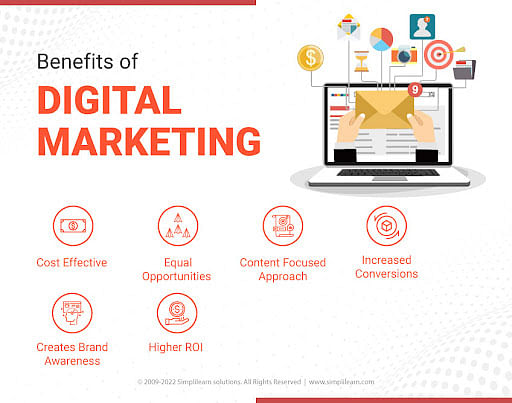Explore the Boundless Potential of Web Design: Igniting Digital Innovation
Explore the Boundless Potential of Web Design: Igniting Digital Innovation
Blog Article
Enhance Customer Experience and Drive Traffic With Responsive Web Style
In today's electronic landscape, where users are accessing websites from a multitude of devices, responsive web design has come to be more vital than ever. With its capability to adjust and flawlessly adjust to different display sizes, responsive style not only enhances customer experience yet likewise drives website traffic to your web site. Why is this style technique so critical? How does it improve user engagement and increase internet site traffic? In this discussion, we will discover the crucial elements of effective responsive design, delve into the very best methods for its implementation, and discover the secrets to improving individual experience while driving more traffic to your website.
Why Receptive Web Design Issues
Responsive web design is a necessary facet of modern-day web growth due to its capability to make sure ideal individual experience throughout different gadgets and display sizes. With the spreading of mobile phones, tablet computers, and other smart phones, it has come to be essential for sites to adapt and give seamless functionality regardless of the gadget being used.
The main reason responsive website design matters is that it allows individuals to have a enjoyable and regular browsing experience, regardless of the device they are utilizing. A responsive web site automatically changes its design, web content, and design aspects to fit the display dimension and resolution of the device, making sure that individuals can easily browse and engage with the website with no aggravation or stress.
In addition, receptive website design additionally plays a considerable function in seo (SEARCH ENGINE OPTIMIZATION) Look engines, such as Google, prioritize web sites that are mobile-friendly and responsive in their search results page. By incorporating receptive style principles, websites can improve their presence and ranking, causing boosted natural web traffic and prospective customers.

Boosting User Interaction Through Responsive Layout
Maximizing customer interaction is a key goal of receptive layout, as it makes sure that users can quickly access and engage with internet site material on any kind of device. With the raising use tablet computers and mobile phones, it is crucial for web sites to adjust to different screen sizes and resolutions. Receptive design makes it possible for sites to instantly change their design and web content to give a seamless individual experience across tools.
Among the primary ways receptive style boosts individual engagement is by reducing load times. With a responsive web site, users don't have to wait on separate mobile versions to lots, leading to quicker access to web content. This improved rate brings about higher customer satisfaction and encourages them to invest even more time on the site.
In addition, responsive design enhances user interaction by enhancing navigation and interface (digital marketing Carlsbad). When a web site is made responsively, buttons and menus are maximized for touch interactions, making it simpler for individuals to connect and browse with the site on their smart phones. This user-friendly and intuitive experience maintains users engaged and encourages them to explore even more of the internet site
Additionally, receptive style enables for better content exposure and readability. By adjusting the layout and font sizes to different devices, receptive web sites ensure that customers can easily check out and understand the material. This improves individual involvement by reducing the requirement for zooming or scrolling to review the message.
Increasing Internet Site Web Traffic With Responsive Internet Design
With the expanding appeal of mobile devices, having a website that is receptive to different screen dimensions and resolutions is important for driving increased traffic. In today's electronic landscape, users are accessing web sites from a selection of tools such as smartphones, tablet computers, and desktop. Each of these tools has different display dimensions and resolutions, and if your site is not created to adjust to these variations, it can cause a bad user experience and a loss of prospective website traffic.
Receptive internet layout makes certain that your site looks and functions efficiently across all devices. By utilizing versatile grids, fluid photos, and media queries, receptive style enables your website to immediately change its navigating, layout, and material to fit any type of display dimension. This indicates that individuals will certainly have a smooth browsing experience despite whether they are making use of a small smartphone or a big desktop computer.
Key Components of Effective Receptive Design
Efficient receptive style includes several crucial components that guarantee a smooth user experience throughout various devices. One of these components is versatile grids and formats. By utilizing family member units like percentages rather than repaired units like pixels, developers can develop layouts that adjust and scale to fit different display dimensions. This allows material to be displayed in a aesthetically enticing and legible way on any kind of tool.
An additional important element is media questions. These allow designers to apply different styles and designs based upon the features of the customer's device, such as screen size and alignment. By utilizing media queries, designers can maximize the presentation of material for every gadget, making sure that it is quickly obtainable and readable.
Responsive pictures are also important in reliable responsive style. Photos that are too big can decrease web page load times on mobile phones, while pictures that are as well little may show up pixelated on larger displays. By utilizing methods such as receptive photo resizing and lazy loading, designers can make sure that images are suitably sized and optimized for every gadget.
Last but not least, reliable receptive style entails a mobile-first technique. This suggests developing and focusing on content for mobile tools first, and afterwards enhancing the layout and expanding for larger screens. This method guarantees that one of the most vital web content is quickly obtainable web developer & designer on smaller sized displays, while still supplying an abundant experience on larger gadgets.
Best Practices for Applying Responsive Web Layout
Carrying out receptive website design needs careful his response consideration of numerous ideal methods to make certain an optimal individual experience throughout various tools. Here are some key ideal practices to comply with when applying receptive internet style.
First of all, it is crucial to prioritize mobile users. With the enhancing prominence of mobile tools, creating for mobile-first has come to be crucial. Beginning by creating for smaller sized screens and after that considerably boost the format for larger displays.

An additional crucial best method is to maximize photos for different display resolutions. Large pictures can reduce down the filling time of your web site, especially on mobile phones with slower links. Use receptive pictures that can be resized based on the device's screen resolution to boost efficiency.
Additionally, test your internet site on different tools and display dimensions to ensure a seamless and constant experience. There are various screening tools readily available that can help you recognize any problems and make essential adjustments.
Finally, focus on usability and availability. Guarantee that your web site is simple to browse, with clear and concise web content. Make certain that your site is accessible to individuals with disabilities and complies with accessibility standards.
Verdict
To conclude, responsive website design plays an essential function in boosting user experience and driving website traffic to internet sites. By adopting receptive layout principles, sites can make sure ideal seeing experiences throughout various devices, bring about raised user engagement (The Ad Firm web design top web development companies agency). Moreover, responsive layout can also add to greater web site web traffic as it boosts internet search engine positions and helps with simple sharing of web content. Businesses ought to concentrate on executing the key elements and finest practices of responsive design to effectively fulfill the demands of modern-day individuals.
Optimizing individual engagement is a crucial goal of receptive layout, as it makes sure that customers can easily access and engage with internet site material on any device. Receptive design allows web sites to instantly readjust their format and web content to give a smooth user experience throughout tools.
Additionally, receptive style enhances individual engagement by enhancing navigating and customer interface.Responsive images are likewise crucial in efficient receptive design. By embracing responsive style principles, websites can make sure optimal seeing experiences throughout different gadgets, leading to increased customer involvement.
Report this page